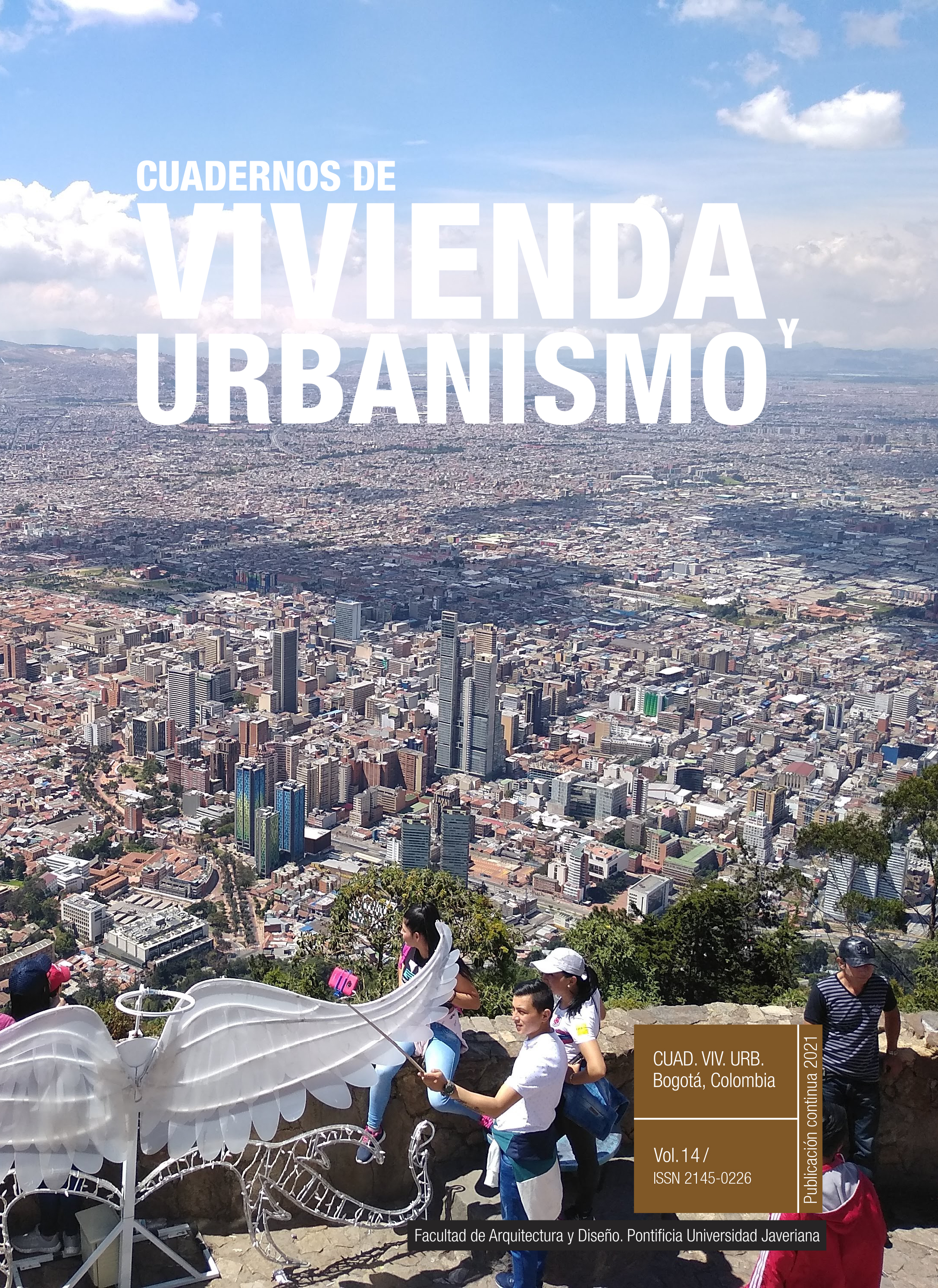Abstract
The purpose of this text is to make visible how, on numerous occasions, architects propose progressive dwellings that serve as a support for processes of housing transformation and growth, carried out by the users; and that, if the proposed constructive or structural system is easily assimilated and interpreted by its inhabitants, they can come up with much more complex proposals in spatial, social and use terms than those initially planned by their designers. To assert this, based on the texts by De Certeau and Bamba and Costa, and taking as a case study Growing Houses (Casas que crecen) by Ramírez Vázquez, we graphically analyze the intervention tactics of this living space (appropriations, delimitations, negotiations and growth) from its original proposal in 1962 to its current state 57 years later, understanding the appropriation of the living space by its users as a process that stimulates their individual and social wellbeing
Bamba, J. C., y Costa, A. (2016). Apropiaciones, delimitaciones, negociaciones en el espacio
colectivo. Caracterización multiescalar de la vivienda social en Guayaquil (1940-1970). Revista Dearq, arquitectura y antropología, 19, 20-29. https://doi.org/10.18389/dearq19.2016.02
Barrios, R. (2014). Entre la incapacidad de acción y la autonomía. Miradas sobre la participación popular en políticas de vivienda y hábitat
en las décadas de los 60 y 70 en Argentina. Los aportes de John Turner y Víctor Pelli. Cuaderno Urbano. Espacio, Cultura, Sociedad, 16, 69-86. http://revistas.unne.edu.ar/index.php/crn/article/view/269
Canales, F. (2017). Vivienda colectiva en México. El derecho a la arquitectura. Gustavo Gili.
De Certeau, M. (2000). La invención de lo cotidiano. I. Artes de hacer. Universidad Iberoamericana.
Feldman, R., y Stall, S. (2010). The Dignity of Resistance: Women Residents’ Activism in Chicago Public Housing (Environment and Behavior). Cambridge University Press. https://doi. org/10.1017/CBO9780511734977
García Holley, M. (2014). La casa que crece. Proyecto para viviendas de interés social - Pedro Ramírez Vázquez con el ingeniero civil Elías Macotela y el arquitecto Jorge Campuzano (1962). do.co mo.mo_México, 32-33, 11-15. http://www.esteticas.unam.mx/Docomomo/boletin32_33/bol32_4.pdf
García-Huidobro, F., Torres, D., y Tugas, N. (2008). ¡El tiempo construye! Time builds! Gustavo Gili.
Haramoto, E. (1987). Vivienda social. Tipología de desarrollo progresivo. Instituto de la Vivienda, FAUU de Chile; Centro de Estudios de la Vivienda Fabau Central.
Martín López, L. (2014). Yo crezco, tú creces, él crece... Nuestra casa crece. Mecanismos de ampliación en la vivienda contemporánea. [i2]
Innovación e Investigación en Arquitectura y Territorio, 2(1), 49-60. https://doi.org/10.14198/i2.2014.2.04
McGuirk, J. (2015). Ciudades radicales. Un viaje a la nueva arquitectura latinoamericana. Turner Publicaciones S. L
Ramírez Vázquez, P., y Macotela García, E. (1962). Casas que crecen: una realización de gobierno e industria privada. La Prensa.
Rapoport, A. (1982). The Meaning of the Built Environment. A Nonverbal Communication Aproach. The University of Arizona Press
Schneider, T., y Till, J. (2007). Flexible Housing. Elsevier.
Serfaty-Garzon, P. (2003). L’Appropriation. Dictionnarie de l’habitat et du logement. Éditions Armand Colin. http://www.perlaserfaty.net/texte4.
htm
Tapie, G. (2014). Sociologie de l’habitat contemporain. Vivre l’architecture. Éditions Parenthèses.
Turner, J. (1976). Vivienda, todo el poder a los usuarios. H. Blume Ediciones.

This work is licensed under a Creative Commons Attribution 4.0 International License.


